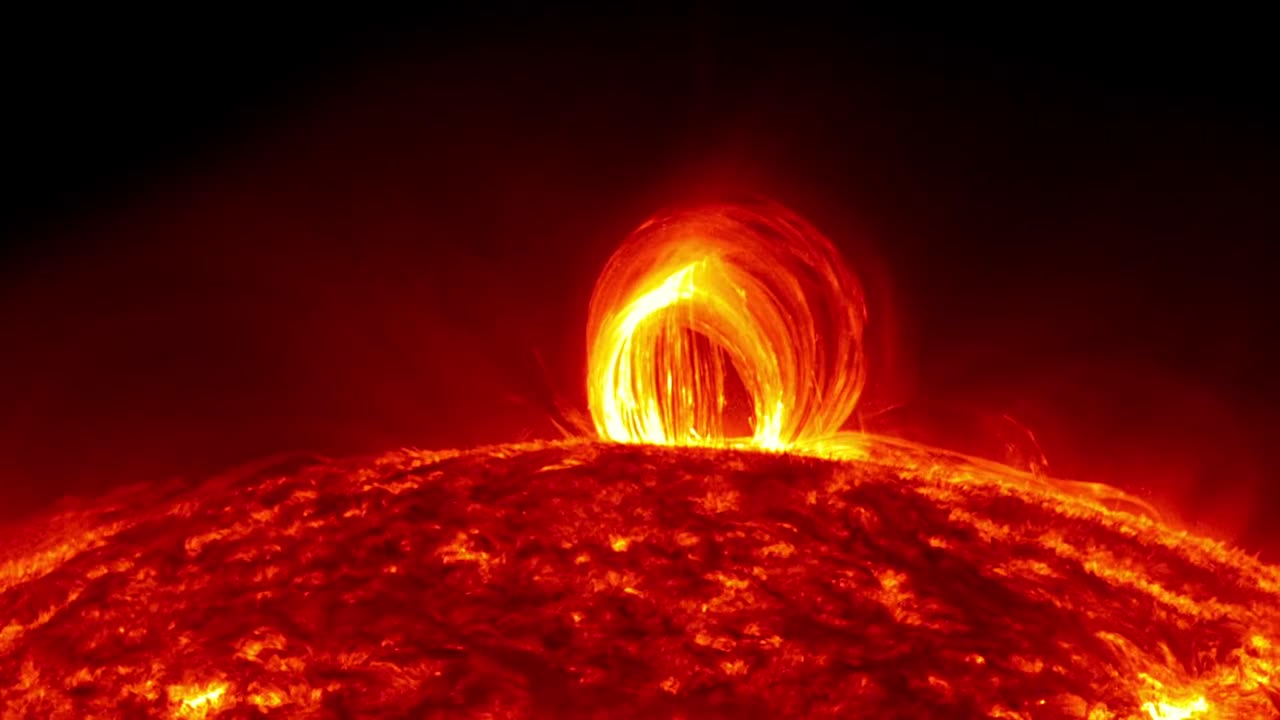Premium Only Content

Rain On The Sun
Eruptive events on the sun can be wildly different. Some come just with a solar flare, some with an additional ejection of solar material called a coronal mass ejection (CME), and some with complex moving structures in association with changes in magnetic field lines that loop up into the sun's atmosphere, the corona.
On July 19, 2012, an eruption occurred on the sun that produced all three. A moderately powerful solar flare exploded on the sun's lower right hand limb, sending out light and radiation. Next came a CME, which shot off to the right out into space. And then, the sun treated viewers to one of its dazzling magnetic displays -- a phenomenon known as coronal rain.
Over the course of the next day, hot plasma in the corona cooled and condensed along strong magnetic fields in the region. Magnetic fields, themselves, are invisible, but the charged plasma is forced to move along the lines, showing up brightly in the extreme ultraviolet wavelength of 304 Angstroms, which highlights material at a temperature of about 50,000 Kelvin. This plasma acts as a tracer, helping scientists watch the dance of magnetic fields on the sun, outlining the fields as it slowly falls back to the solar surface.
-
 23:23
23:23
MYLUNCHBREAK CHANNEL PAGE
1 day agoAustralia Was Found
56.7K46 -
 1:41:45
1:41:45
The Connect: With Johnny Mitchell
12 hours ago $9.40 earnedMexican Cartels Are Moving MORE Drugs Than Ever, Going To WAR On The Government (Emergency Update)
30.2K4 -
 6:54:01
6:54:01
MissesMaam
8 hours agoFinishin' Red Dead Redemption 💚✨
47K7 -
 34:44
34:44
LFA TV
5 days agoMIRACLES DO HAPPEN!
67.5K1 -
 LIVE
LIVE
GamersErr0r
3 hours ago $0.68 earnedMooning My Community
457 watching -
 2:22:59
2:22:59
Banks Atkin Live
6 hours agoChilling playing Games & Vibin
47.6K1 -
 LIVE
LIVE
Dragoon_B
7 hours agoNothing crazy - just Counter Strike + Valorant
77 watching -
 18:03
18:03
Stephen Gardner
7 hours ago🔥YES!! Trump GETS HUGE win in 4th district court!!
65.1K380 -
 4:40:54
4:40:54
G3T
5 hours ago🔴GET | not saying it
17K -
 15:35
15:35
DeVory Darkins
12 hours ago $3.92 earnedGavin Newsom drops CRUSHING BLOW on Democrats
22K66